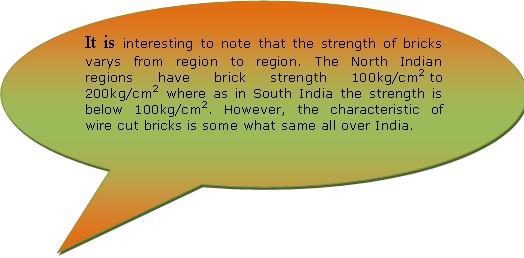|
|
|
|
Brick Masonry Walls
|
|
Construction of brick units bonded together with mortar (a mixture of cement/lime/mud and sand) is known as brick masonry. Bricks have been known to be part of wall construction since ancient times. The quality of bricks depends on the type of soil and the methods of production. There are two types of bricks burnt and unburnt.
|
|
Unburnt bricks are the ones which can be produced in a small scale in formal units requiring less machinery and equipments with less capital. The only significant input is unskilled labour. Thus the cost of production relatively low. With mechanized production techniques, bricks with compressive strength upto 100 kg/cm2.
|
|
The Burnt bricks are mainly of three types i.e. country brick, the table moulded brick and wire cut brick. Country bricks are made by a single four sided mould. These bricks are moulded by the soft-mud process where soil is mixed with water and pressed. The moulding is done on level ground and the wet bricks is left on the ground to dry. After drying the bricks are stacked in a clamp and burnt using fossil fuel.
|
|
The Table moulded bricks are made of stiffer mud and use five sided mould. The use of lesser moisture during moulding leads to improved shape and strength for the brick. The wet brick is released by turning the mould upside down on a level platform. These bricks generally have a `frog' on one of the bedding faces. These bricks are then dried in shade and burnt in continuous kiln Bulls Trench Kiln. This kiln requires larger area of land and capital cost however this is the most popular form of brick production in northern part of India. These bricks are much stronger than country bricks with strength varying from 35kg/cm2 to 75kg/cm2.
|
|
The Wire cut bricks are produced by a more mechanised operation. The selected soil is pugged adequately and then extruded into a continuous slab of clay. This slab is then sliced by a wire frame into a number of bricks. After drying, the bricks are burnt in a Hoffmann's kiln. The strength of these bricks vary from 100kg/cm2 to 200kg/cm2. This is an expensive brick however can be used as cost effective option for load bearing construction upto five storeys in place of RCC framed construction. There are number of production units in NCR region.
|

|
|